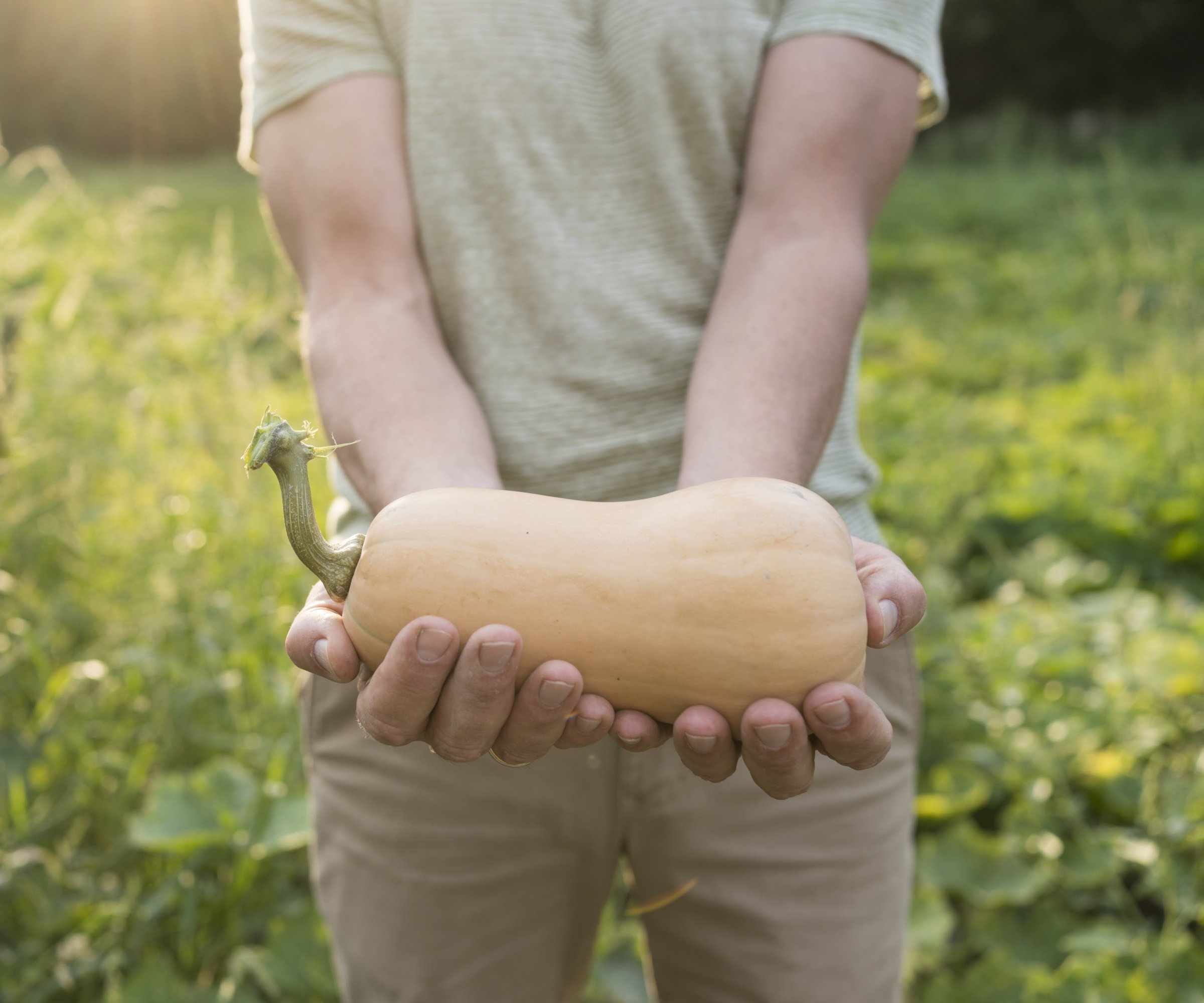Benny Blanco’s Garden for Good: Growing Veggies with a Purpose
On top of being a music producer and proud husband of Selena Gomez, Benny Blanco is an avid gardener and philanthropist. Here's how he's donating to local food deserts, and how you can do it, too.


Benny Blanco is best known as a music producer, songwriter, and proud husband to Selena Gomez. But, there’s another side to him that’s just as, if not more, inspiring: his garden. Not because of its beauty (though it is very nice) or its “aesthetic.” It started out as a personal project for him, with the idea of simply growing his own vegetables, but it has now blossomed (pun intended) into something even greater that’s making a real difference.
Through a partnership with the L.A.-based charity Support and Feed, Blanco donates the produce from his garden to food deserts in the Los Angeles area. This brings fresh, nutritious vegetables to communities that need them most, and who often rely on canned goods.
If you’re inspired by this idea as much as we are, you can absolutely try it out in your own garden. The best part? It doesn’t require acres of land to create an impact. Even a small space can support a thriving urban vegetable garden with the right tools and planning.
1. Start with What Fits Your Space

Regardless of whether you have a ton of space in rural Oklahoma or a small balcony in the middle of Boston, you can make it productive. Urban gardeners can use large containers, raised beds, or window boxes, while their counterparts in the suburbs might have the ability to accommodate a vegetable patch. Rural gardeners can go even bigger with multiple beds and rows of vegetables.
Pro Tip: If you have a smaller space, consider containers or tiered planters, but if you have a bigger area to work with, you can consider raised beds or in-ground plots. This Homdox Galvanized Raised Garden Bed with Cover from Walmart is perfect to get you started. Be flexible, and know that everyone can grow food, no matter their square footage.
2. Choose Vegetables with Purpose

Blanco’s garden isn’t just a random assortment of plants that he hopes people will eat. He grows it intentionally in a way that will produce vegetables that can be shared with the community. Think leafy greens that can be for salad, tomatoes that can be chopped up or turned into spaghetti sauce, and sturdy root vegetables like carrots.
Pro tip: Plan your garden according to the space you have, not the space you want. If all you have space for is a smaller yield like herbs or baby carrots, totally fine! Stick with that. Smaller gardens benefit from fast-growing crops anyway. If you have a larger space, go with things that produce a large harvest: kale, zucchini, or squash.
Sign up for the Gardening Know How newsletter today and receive a free copy of our e-book "How to Grow Delicious Tomatoes".
3. Garden for Social Impact
Benny Blanco’s example proves that gardening doesn’t only have to be for you or your family’s personal benefit (not that that’s a bad thing!) Growing vegetables to donate helps tackle food insecurity, gets people eating healthy, and promotes community engagement.
He told Architectural Digest, “My friend Maggie Baird has a charity called Support and Feed. We linked up, and we basically deliver all the vegetables from my gardens to different food deserts in the L.A. area.” He continued, “We do it every single week, and we get to feed people who are less fortunate and who don’t have access to like, incredible, healthy, fresh vegetables.”

You don’t need to be a celebrity or partner with a charity to make a difference – every small bit helps. Don’t know where to take your fresh produce? Try local food banks, community kitchens, churches, or school programs. Even sharing with your neighbors or friends can spark a chain reaction and benefit you more than you might realize.
To find a food bank near you, visit Food-banks.org.
4. Quick Tips for Gardens of Any Size
Regardless of the size of your garden, there are a few tips that you should remember:
- Sunlight: Most veggies need about 6 to 8 hours of sunlight per day, so arrange your raised beds and pots accordingly.
- Soil: Make sure you have high-quality soil mixed with compost to support healthy vegetable growth. Try Organic & Natural Planting Soil for Vegetables & Tomatoes from Walmart.
- Watering: Container gardens dry out quickly, so you’ll want to find a self-watering pot if you’re a busy person. Try this Self-Watering Window Box from Amazon.

Sarah is a lifestyle and entertainment writer with over a decade of experience covering everything from celebrity news to home and style trends. Her work has appeared in outlets including Bustle, The Everygirl, Hello Giggles, and Woman’s Day. When she’s not writing about the latest viral moment, she’s cultivating her love of gardening and bringing a storyteller’s eye to all things green and growing.